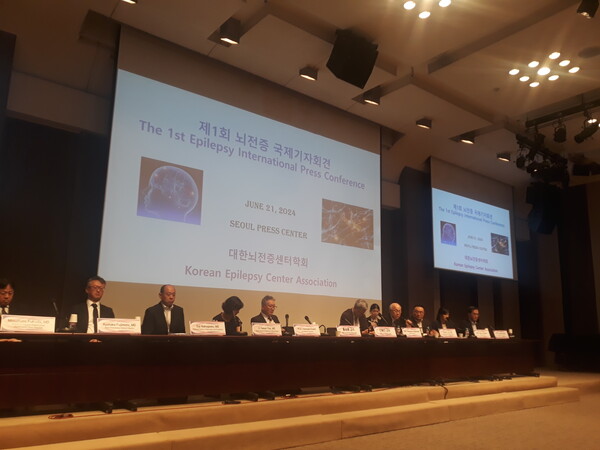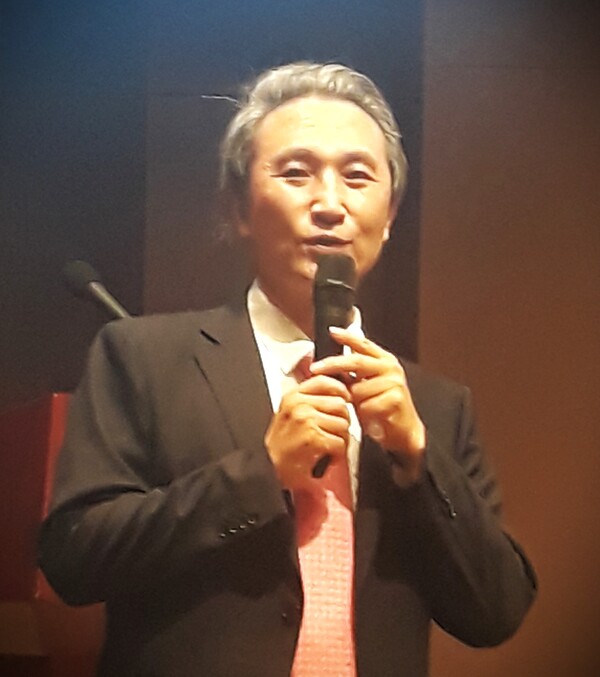Due to low medical fees, Korean hospitals that can perform essential surgeries for drug-resistant epilepsy are disappearing; even the top four hospitals for epilepsy in Korea, where many patients are treated, are reluctant to introduce surgical robots necessary for active epilepsy surgery; and only one hospital in this country provides specialized counseling support for epilepsy.
All this shows how poor the domestic environment is for treating and managing epilepsy.
Such a stark reality was highlighted at the “1st Epilepsy International Press Conference” held by the Korea Epilepsy Center Association (KECA) at the Seoul Press Center on Friday last week.
There are about 400,000 people with epilepsy in Korea, and 30 percent are drug-resistant epilepsy patients who have recurrent epileptic seizures despite multiple medications. Currently, the alternative to treating drug-resistant epilepsy is epilepsy surgery, but it is not actively practiced in Korea.
"There are only six hospitals in Korea that currently perform epilepsy surgery that involves inserting electrodes into the brain. They are Seoul National University Hospital, Samsung Medical Center, Severance Hospital, Asan Medical Center, Korea University Guro Hospital, and Inje University Haeundae Paik Hospital," said Professor Hong Seung-bong of the Department of Neurology at Samsung Medical Center who is also chairman of the KECA.

Surgery for epilepsy is a highly specialized treatment, but the lack of hospitals in Korea is not due to the lack of skills of Korean epilepsy specialists.
Shin Dong-jin, president of the Korean Epilepsy Society (KES) and professor of neurology at Gachon University Gil Medical Center, said, “In the past, Gachon University Gil Medical Center could perform epilepsy surgery, but it can't do it anymore because of low medical fees," pointing to the reality that hospitals are unable to perform essential epilepsy surgeries because of the low medical insurance fees.

Chairman Hong also pointed out that of the top four hospitals for epilepsy in Korea -- Samsung Medical Center, Severance Hospital, Seoul National University Hospital, and Asan Medical Center -- only Asan Medical Center does not have the surgical robot, which is SEEG three-dimensional EEG surgical device necessary for active epilepsy surgery.
Surgery for epilepsy, which involves placing 20 electrodes in the brain, takes a long time, and a surgical robot that can significantly reduce this time is needed to treat actively patients with drug-resistant epilepsy in Korea. However, there are only three such robotic surgical devices in Korea -- two at Samsung Medical Center, and one each at Severance Hospital, and Seoul National University Children's Hospital.
A bigger problem is the lack of access to comprehensive epilepsy care in Korea. Comprehensive epilepsy care is necessary because patients with epilepsy suffer from multiple psychosocial problems, not just medication or surgery.
To this end, developed countries already operate centers that provide specialized counseling support for epilepsy, including 28 centers in Japan and 260 centers in the United States. In Korea, however, only one such center, the National Epilepsy Care Center's "Epilepsy Help Line," which opened in August 2020, currently provides services.
Access to medication, the basic treatment for epilepsy, is also worse in Korea than in the U.S. Even the new Korean drug Cenobamate, which has been prescribed to patients with epilepsy in the U.S. since May 2020, has yet to apply for approval to the Ministry of Food and Drug Safety.
"It's a drug developed in Korea, and we feel it very upsetting with the company (SK biopharmaceuticals) that the drug is brought back to Korea after going through phase 1, 2, and 3 clinical trials in a foreign country. If it had been launched in Korea, the government could have expedited various systems to support this domestically developed drug, but it has been inactive," President Shin pointed out.
This is a big difference between the Japanese epilepsy drug zonisamide and the Korean epilepsy drug cenobamate, Shin pointed out. While Japanese doctors can actively use zonisamide, this is not the case for cenobamate.
"In Japan, there is a drug called zonisamide that was developed in Japan, and Japanese doctors are fully supportive of it," Shin said, "That is the difference between Japan and Korea."
To change the poor treatment and management environment for epilepsy in Korea, the KECA emphasized that 18 base epilepsy support hospitals should be designated starting next year. The government should provide an annual budget of 75 million won ($54,000) for each of these hospitals so that patients with epilepsy can receive professional counseling from a coordinator specializing in epilepsy, it added.
"Korea should also support people with epilepsy to receive comprehensive treatment and management of the disease," Chairman Hong said.
Hong emphasized that the designation of a base epilepsy support hospital should be done in Korea next year to address barriers to treatment, such as short treatment times of only three to five minutes and psychosocial problems experienced by people with epilepsy.
Related articles
- SK biopharmaceuticals criticized for delayed cenobamate release in Korea, leaving patients without effective treatment until 2027
- Sanofi's epilepsy drug distributed by Handok designated as essential drug in Korea
- Dong-A ST licenses in SK biopharmaceuticals epilepsy drug to market in 30 countries
- [Contribution] A physician's regret over delayed introduction of cenobamate in Korea
- SK biopharmaceuticals signs contract with US-based TerraPower to receive high-purity radioisotopes
- Epilepsy rises in older adults, leading to 'epileptic sudden death’
- 'Epilepsy caused by stroke, dementia, and brain tumor can be managed with medication'

